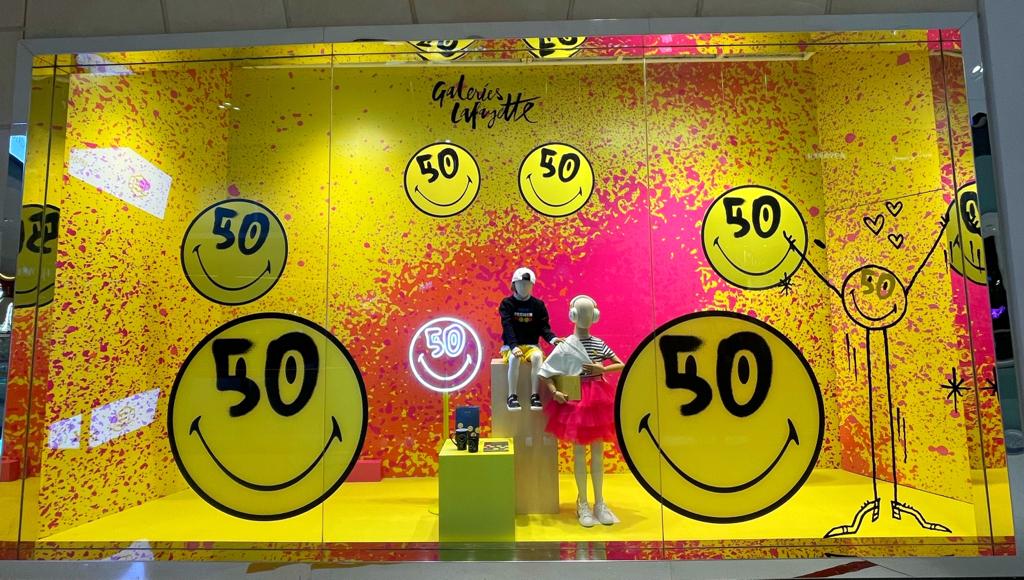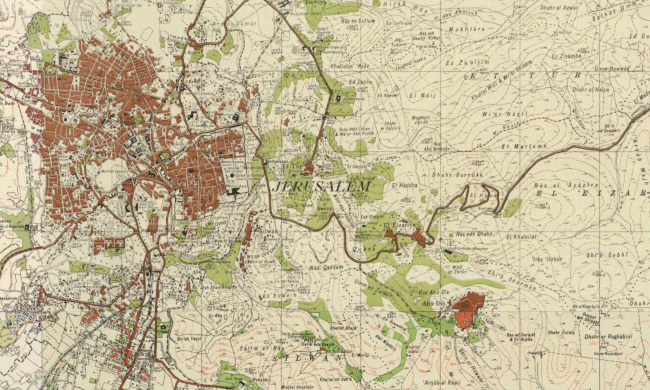During a trip to the Mleiha Reserve in Sharjah, each of the ten artists picked a location in one of the spots of the abandoned village and created pieces that can be seen in the exhibition. For this project, the artists took on several roles at once: the role of nomads who never sit still and explore new territories; the role of archaeologists who study unknown artifacts; and, finally, the role of representatives of a new generation who explore the pages of the past through discovered objects. The territory of the reserve turned out to be a treasure stash, and the exhibition became a project dedicated to exploring those treasures.

Travel Diary
Specifically for the project, the artists came up with a legend about an exploratory mission, in the course of which the places where they have settled and the objects discovered onsite have a speculative history.
Ivan Ilinskii created futuristic mirror cubes for the project. These pieces installed near the village reflected the age-old dunes, emphasizing the eternity of nature in comparison to humans. Out of all the spots in the desert, the artist chose a black hut. Its color echoes the canvases and objects created during the residency with the artist’s signature element and his alter ego — the black stickman. This character alludes to the man’s endless search for their own identity.

Another artist, Turben, decided to make his house the brightest one in the whole art-residency by painting it pink. He came up with the idea that the house was once home to two sisters and their guardian cats. His characters look like the ones from spy or detective stories, and to make them more ironic, the artist, who’s yearning for home, created an original decor — two objects in the form of birch trunks.
“It was my first time in the desert. The scorpions were very memorable: you can’t really relax because of them or just lie down on the sand. It was so hot, and I wish there were some greenery. This striking piece with birches stood out against all this sand.“

Artist Xeato painted a portrait of a cheetah (a local animal) for the intervention and created a series of objects based on the myth of Atlantis. Like other artists, Xeato imagined that a palace might have existed at some time where there are ruins now, and the cheetah depicted in one of the paintings was the chief guardian of the place. Now the animal is saddened by the loss of its masters who once lived there. The painting is also a part of the artist’s “Minus 2” series of blurred images. The author was inspired to create the series by his wife who has bad eyesight. Therefore, Xeato is trying to see the world through her eyes. In addition to “Dad” (“Batya”), the painting series is complemented by the pieces “Sonny” and “Nephew”.

As part of the intervention, Sergei Kk pasted one of the huts in the village with reportage photos. These black-and-white photos comprised subjects of artistic outings, glued together randomly, like a story in a meaningless dream. Photos of him are a part of the exhibit — these are adapted versions of a visual diary — as well as a collage of photographs and a series of Polaroid pictures titled “Twilight”, which draws an analogy between animals and people. Just like animals, street artists band together, seek territory together, develop their own particular way of communication and create lasting bonds.
“My most prominent memory is the feeling of tranquility and how visually unburdened the desert is compared to cityscapes. Bright sunlight during the day gradually devolved into total darkness. Twilight always created a certain easing of tension, which inspired me to shoot portraits with a Polaroid.”

”The House with a Botanical Garden” is a location in the village that the artist Dusto, the founder and member of the art group 10.203, picked for his intervention. The artist reflects on the course of history, mob psychology, the origins of aggression and confusion, and how we should deal with the cyclicality of life. The author uses green and red colors reminiscent of video recordings from the Soviet period, in which red-colored flags stood out against the green. The motif of death unites three of the artist’s canvases: a group portrait of the army men, a canvas with skulls, and a still-life depicting withered trees accompanied by dried flowers in pots.
“The trip to the desert was first and foremost an adventure for us. We compared ourselves to archaeologists, as we began to thoroughly study the location and the attributes discovered in the village.”

The artist Filippo Minelli placed objects depicting window areas and doorways with mashrabiya elements in the desert. Minelli began creating some of the pieces from the “What Things Are Not” series back in 2016, reflecting on the nature of things and their absence or presence in the landscape. By combining digital and natural landscapes in his works, the artist shows how the scenery can deceive us. The impression that you get from an object or a work of art changes in response to the surrounding context.
“The time spent through the Mleiha desert was very fulfilling, as you transition from Dubai and Sharjah to rural and more authentic scenarios and traditions. What I love the most there is to adapt to slower rhythms, see camel herds moving against the backdrop of the mountains, look at how different local priorities are compared to the coastal areas.”

During a trip to the abandoned palace, the Algerian artist Abderrahmene Salah, known under the pseudonym Lokher, reflected on the fact that one always carries a piece of the past with him. Deeply ingrained memories tend to burst out when you least expect it. So, the artist decorated the bottom of the pool discovered in the village with a 3d-mural of his childhood favorite breakfast. And one of the author’s pieces created during the intervention depicts a dog, as that is the creature that patiently waits for the man at home. The exhibition pieces organically continue the “Dream” series conceived in 2022 that is devoted to the themes of home and nostalgia.
Artist Maxim Ima became interested in the physics of motion during the trip to the desert. His subjects were tires and dry plants that the wind rolls over the sand dunes.
“The desert inspired me with its lack of anything excess. It’s a quiet place where your head just works differently. I was finding objects and immediately getting ideas about how to use them. The idea of meaningless and uncertain constant movement was foundational here. It is movement for the sake of movement — not for the sake of purpose. There is only the horizon ahead, and there is no clarity, no final point. The stylings of my paintings with their plant motifs and tangled lines were perfect for embodying this idea. Today, in a time when people are forced to migrate and leave their homes, this seemed like a pertinent idea to me.”

For the installation “Everyone had the clocks, but no one had the time” located in the backyard, the author gathered an entire collection of tires and scribbled clock faces on each of them. The artist also put up a signpost that says “To mall, to wall” at the entrance to the village, ironizing the village’s remoteness from all kinds of communications.
For the project, Iranian artist and architect Neda Salmanpour created light sculptures made from sand by studying the movements of sand dunes and how the light is reflected by grains of sand. Dunes are rather contradictory study subjects: they are easily destroyed by wind, yet they are also capable of destruction, hiding entire cities under them.
The dialogue between the audience and the environment, which is an important principle in street art, has transformed — in this uninhabited desert the artists took the role of the audience upon themselves. The process of the intervention was documented by Anton Selone — at the exhibition one can see his film shots taken with a 60-year-old Hasselblad camera, which was discounted in 2022. Selone’s work with the camera gradually becomes an artifact and is a process that allows us to think about the phenomenon of time and the role of things in history.
The map of the intervention in the Mleiha Desert
The House with a Botanical Garden is the site of intervention conducted by the artist Dusto, the founder and a member of the team 10.203. The creator devoted his works to the conflict between reality and representation, as well as unlearned lessons of history.

The Pink Hut is a room featuring art pieces and objects done by the artist Turben from Saint-Petersburg. He tends to work in a naive style, redrawing memes and depicting various ironic storylines. The style of these pieces was influenced by the works of Leningrad artists like Katya Medvedeva and Ivan Sotnikov, as well as Japanese illustrators like Mogu Takahashi and Miroko Machiko.
The House of Dreams — Sergei Kk pasted one of the huts of the village with reportage photos. The artist works at the crossroads of fine arts and documentaries. The photographer is now actively engaged in artistic practices with the other members of the group «10.203».

The Tire Hut is the site of the intervention conducted by the artist Maxim Ima. His formative years were in the mid 2000s, starting with the then-popular graffiti bombing of trains and commuter rails. Over the course of almost twenty years of his creative work, Ima has gone from conceptual statements in the urban environment to studio work and curated exhibitions. Since 2020, Ima has been a member of the creative community «10.203», where a group of like-minded independent artists organize exhibitions and projects in their own gallery workshop and other venues.

Fences and Window Bars are the pieces done by the Italian artist Filippo Minelli. The artist explored the juxtaposition of the expansion of cities and natural scenery, drawing inspiration from street art. This led to the creation of genuine portals to the Mleiha desert. These are objects that depict doorways and window areas with some mashrabiya elements and canvases that resemble herbariums with the textures of local plants and wire mesh.

Energy cubes — a piece by the artist Ivan Ilinskii. The artist usually turns to abstraction, images of the unconscious and the primitive. For the Mleiha desert intervention he came up with minimalistic mirror cubes that reflect the emptiness and the desertion of the place, as well as timelessness that reigns supreme here.

The White Hut is a spot featuring works of Xeato. The artist’s street pieces reference the French school of graffiti, while the easel and experimental works are inspired by the work of Dürer.
The Black Hut is the site of the intervention conducted by the artist Ivan Ilinskii, where he created two new canvases in his characteristic style featuring a familiar protagonist — a faceless little man that looks like a character from ancient petroglyphs. This pattern featuring the man is replicated on his other piece — the clay bowl that’s similar to vessels dating back to ancient times.
Sand Sculptures — the award-winning Iranian artist and architect Neda Salmanpour created light sculptures made from sand by studying the movements of sand dunes and how the light is reflected by grains of sand. This contemporary Iranian designer and architect works at the crossroads of regional design languages and mathematical models.

The Pool is the place where the Algerian artist Lokher worked. In addition to murals, the artist creates pieces in the studio and engages in digital art. When creating both street and studio works, the author pays great attention to coloristics, composition and detail.
For more information please visit https://quozartsfest.alserkal.online/event/inloco-gallery




